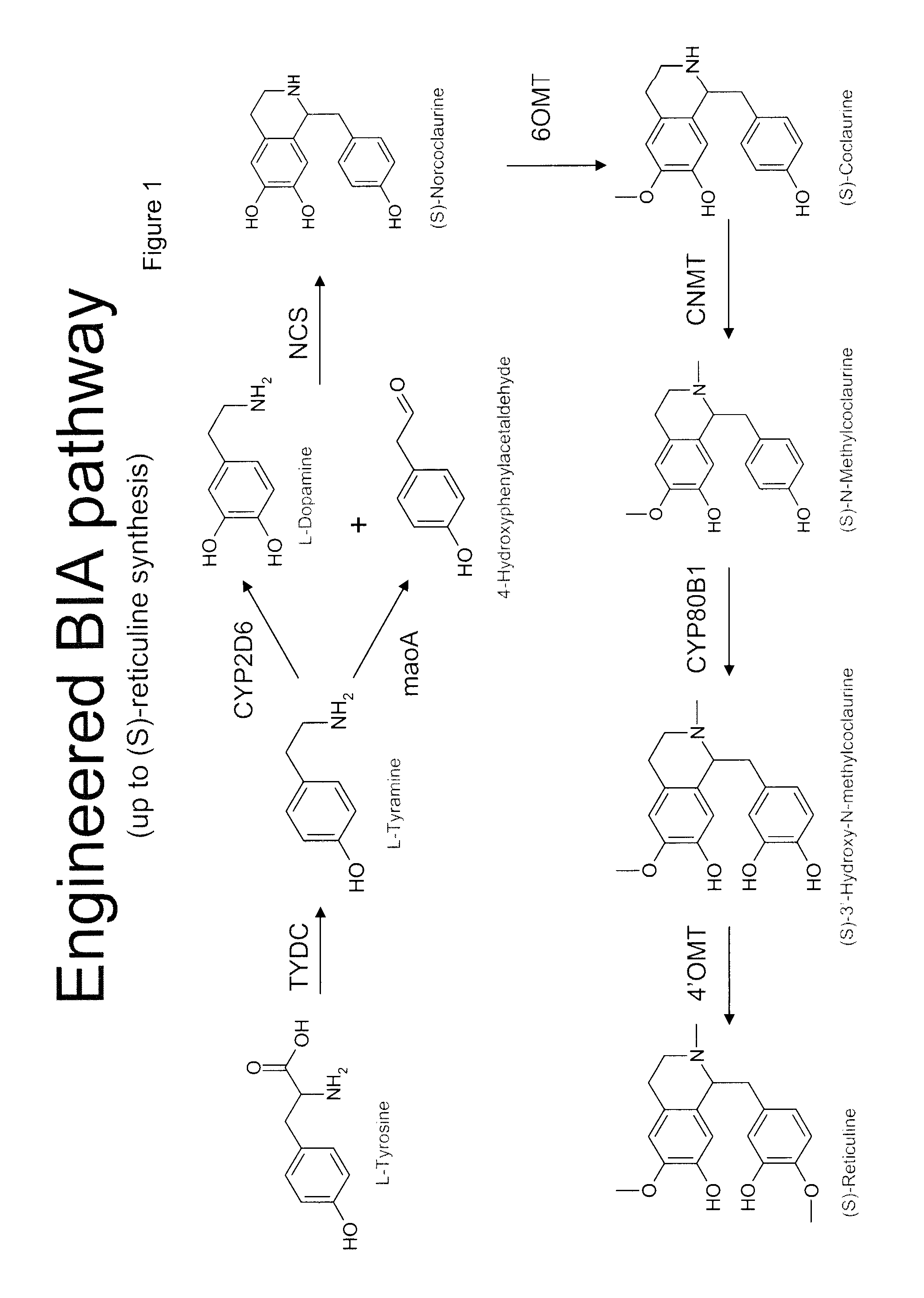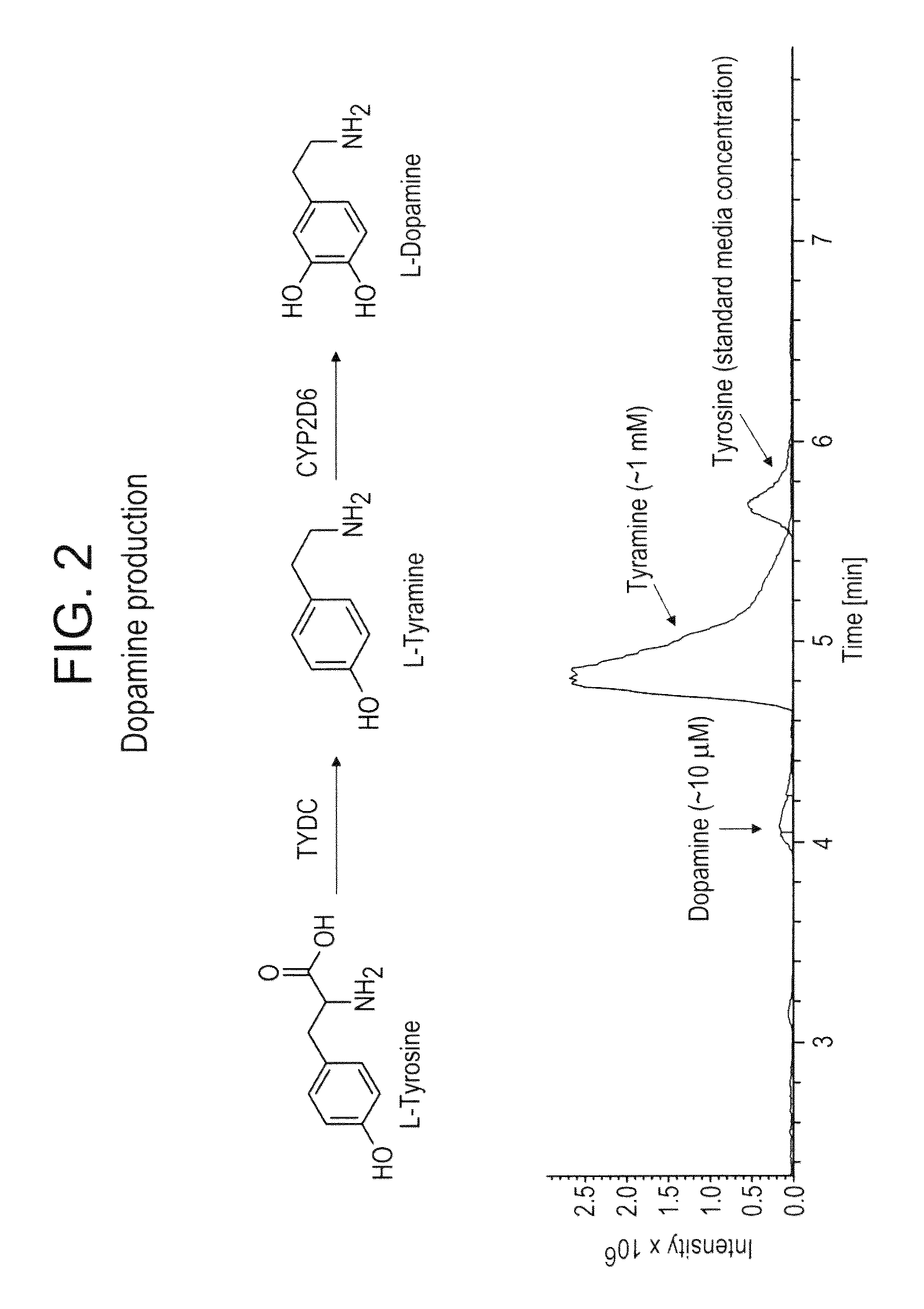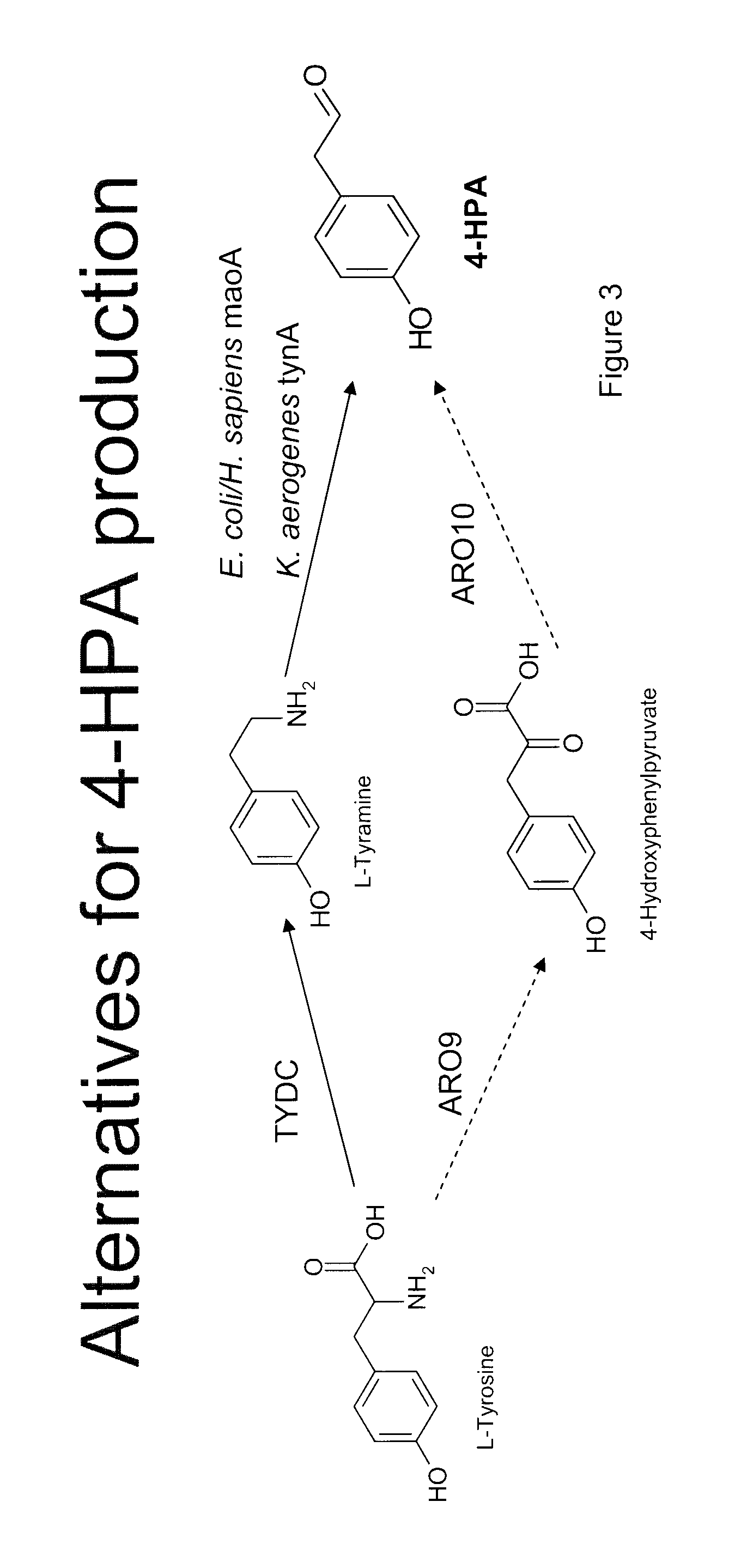Compositions and methods for producing benzylisoquinoline alkaloids
a technology of benzylisoquinoline and alkaloids, which is applied in the direction of lyase, transferase, enzymology, etc., can solve the problems of low quantity of chemicals, many structures are simply unattainable using traditional synthesis methods, and the chemical synthesis of these types of molecules is normally a costly and time-consuming process, so as to optimize the growth rate of the host and promote expression and activity.
- Summary
- Abstract
- Description
- Claims
- Application Information
AI Technical Summary
Benefits of technology
Problems solved by technology
Method used
Image
Examples
example 1
Construction of Yeast Expression Vectors
[0063]Standard molecular biology methods were used to construct the yeast expression vectors. Heterologous coding sequences for the genes of interest were received as plasmids, typically suited for expression in E. coli Coding sequences were either amplified by polymerase chain reaction (PCR) or excised from the vectors if restriction sites were compatible with the destination vector. Briefly, yeast shuttle vectors were constructed based on pCM185 and pCM180 which have an ampicillin resistance marker for maintenance in E. coli, URA and TRP selection markers, respectively, and a centromeric (ARS1 / CEN4) origin of replication for yeast. To construct exemplary vectors, the TEF1 promoter was amplified from p413-TEF and the CYC1 promoter from pCM190 and assembled with the NCS coding sequence using PCR methods. Primers for each segment included suitable restriction sites both for cloning into the plasmid backbone and allowing the coding sequence to b...
example 2
Production of Codon-Optimized CYP2D6
[0064]The coding sequence for CYP2D6 was optimized based on codon usage in S. cerevisiae as well as RNA secondary structure, using commercially available service providers, such as DNA2.0 Inc. (Menlo Park, Calif., USA). There are other service providers that offer codon-optimized sequences, and some algorithms are available on the world-wide web.
[0065]The following is an example of a sequence for yeast codon-optimized CYP2D6 sequence; SalI and NotI restriction sites for cloning are underlined.
[0066]
(SEQ ID NO: 1)1GTCGACATGG CATTGGAAGC ACTAGTCCCT TTAGCTGTAA TTGTAGCAAT51ATTCCTGTTA TTGGTAGACC TTATGCATAG AAGACAAAGA TGGGCTGCAA101GATACCCACC CGGCCCACTA CCCTTGCCAG GACTAGGTAA CCTTTTACAT151GTTGATTTCC AAAATACTCC GTACTGTTTT GATCAATTGA GGAGAAGATT201CGGAGATGTT TTCAGTCTGC AGTTGGCATG GACACCAGTC GTCGTTTTAA251ATGGTTTGGC TGCAGTAAGA GAAGCTTTAG TTACGCATGG CGAAGATACG301GCGGACAGGC CTCCTGTGCC CATTACACAG ATATTGGGTT TCGGACCTAG351ATCTCAGGGT GTATTCCTTG CCCGTTACGG TCCTGCGTGG ...
example 3
Production of Truncated NCS
[0069]The T. flavum NCS sequence, courtesy of Peter Facchini, was that of the N-terminal Δ10 truncation. To construct the full-length gene, the first 30 nucleotides (coding for 10 amino acids) were included in the forward primer sequence used for cloning the gene. For other variants, such as the Δ19 N-terminal truncation, the forward primer was designed to amplify the gene beginning at the 20th amino acid and including an additional start codon if the new starting amino acid was not a methionine. To compare expression levels qualitatively, we cloned each variant into a yeast expression vector containing a V5 epitope tag (pYES2-NT / A, Invitrogen), transformed the plasmids into the wild-type yeast strain using the standard LiAc / SSD / PEG method (Gietz, R D and Woods, R A. Methods in Enzymology, Vol 350, pp. 87-96, 2002), and performed Western blot analysis on the total protein lysates. This showed that the T. flavum NCSΔ10 was the most highly expressed in yeast...
PUM
| Property | Measurement | Unit |
|---|---|---|
| volumes | aaaaa | aaaaa |
| volume | aaaaa | aaaaa |
| liquid chromatography - | aaaaa | aaaaa |
Abstract
Description
Claims
Application Information
 Login to View More
Login to View More - R&D
- Intellectual Property
- Life Sciences
- Materials
- Tech Scout
- Unparalleled Data Quality
- Higher Quality Content
- 60% Fewer Hallucinations
Browse by: Latest US Patents, China's latest patents, Technical Efficacy Thesaurus, Application Domain, Technology Topic, Popular Technical Reports.
© 2025 PatSnap. All rights reserved.Legal|Privacy policy|Modern Slavery Act Transparency Statement|Sitemap|About US| Contact US: help@patsnap.com



